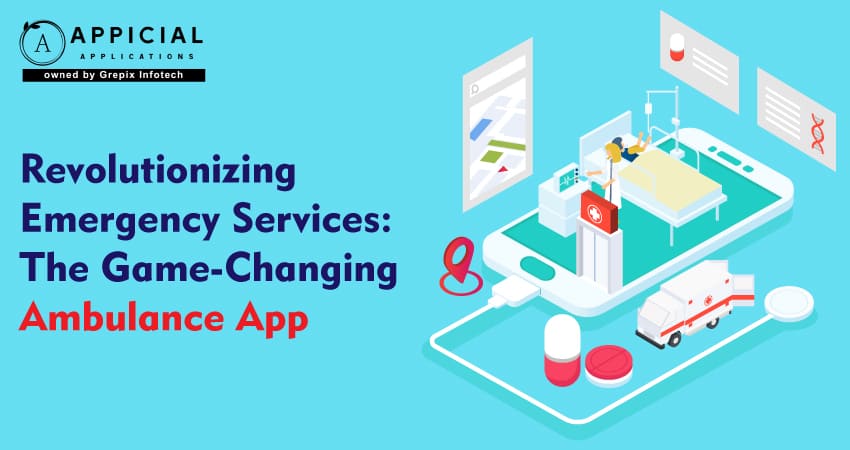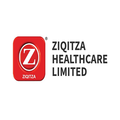
Revolutionizing Emergency Services: The Game-Changing Ambulance App
In today's fast-paced world, every second counts, especially in emergency situations. That's where the game-changing ambulance app steps in, revolutionizing the way emergency services operate with cutting-edge technology. This innovative app ensures that help arrives swiftly and efficiently, saving lives in the process.
With its user-friendly interface and seamless integration with emergency response systems, the ambulance app provides real-time updates on the location of the nearest available medical professionals and ambulance units. Dispatchers can quickly connect with the closest responders, allowing for faster response times and better coordination in critical situations.
This app bridges the gap between those in need and the life-saving assistance they require. By harnessing the power of technology, it streamlines and optimizes the entire emergency response process, ensuring that help arrives promptly, and potentially life-threatening delays are minimized.
The game-changing ambulance app not only benefits patients and those in need but also empowers emergency responders by providing them with the tools and information they need to make crucial decisions on the spot.
With this revolutionary app, emergency services are taken to a whole new level, redefining the way we approach and handle life-threatening situations. It's an innovation that holds the potential to save countless lives and make a lasting impact on our communities.
The blog discusses the transformative impact of ambulance apps on emergency services, emphasizing their role in drastically improving response times and enhancing communication. These apps use GPS and real-time tracking to direct emergency responders swiftly and accurately, ensuring quicker medical attention. They integrate seamlessly with healthcare systems, allowing for better resource management and informed decision-making. The blog also highlights the broader benefits for both patients and providers, such as increased transparency and optimized emergency operations. Overall, ambulance apps are presented as a critical innovation in healthcare, promising to enhance the effectiveness of emergency responses and potentially save lives.
The Need for Innovation in Emergency Services
In emergency situations, time is of the essence. Whether it's a heart attack, a car accident, or a serious injury, the ability to receive immediate medical attention can often mean the difference between life and death. However, traditional emergency response systems are often hindered by various factors such as traffic congestion, inefficient communication channels, and lack of real-time information.
Emergency services have long recognized the need for innovation to improve response times and ensure that help reaches those in need as quickly as possible. The game-changing ambulance app addresses these challenges head-on, utilizing cutting-edge technology to revolutionize the way emergency services operate.
Key Features and Functionalities of the Ambulance App
Creating an effective ambulance app requires incorporating various key features and functionalities that ensure swift response times, ease of use, and comprehensive emergency management. Here’s a breakdown of essential features for an ambulance app:
1. User Registration and Profiles
- User Registration: Allows users to create and manage their accounts using details such as name, contact information, and medical history.
- Emergency Profiles: Users can store critical health information like blood type, allergies, and pre-existing conditions, which can be quickly accessed by medical personnel.
2. GPS and Real-Time Tracking
- GPS Location Tracking: Automatically detects the user's location to send immediate help and allows users to specify different locations.
- Real-Time Ambulance Tracking: Enables users to track the ambulance’s location and estimated time of arrival.
3. Quick Emergency Alerts
- SOS Button: A prominent feature that users can press during an emergency to instantly alert nearby ambulances and registered emergency contacts.
- Multiple Emergency Options: Provides options to contact different types of emergency services, such as fire or police, depending on the nature of the emergency.
4. Seamless Communication
- In-App Messaging/Calls: Facilitates direct communication between the patient and the ambulance driver or medical team.
- Emergency Contact Notification: Automatically notifies predefined emergency contacts when the SOS button is used.
5. Health Information Management
- Medical Records Access: Allows secure storage and quick retrieval of electronic health records (EHR) by authorized personnel.
- Medication Tracking: Helps track medication schedules and critical medical information.
6. Appointment and Scheduling
- Doctor Appointments: Enables users to book appointments with doctors or medical facilities.
- Ambulance Booking: Allows for scheduling an ambulance for non-emergency medical transportation.
7. Payment Integration
- In-App Payment: Facilitates easy payment for ambulance services through various modes like credit/debit cards, mobile wallets, or insurance.
8. Ratings and Feedback
- Service Rating: Users can rate the ambulance service and personnel, which can help improve service quality.
- Feedback System: Provides a platform for users to give feedback on their experience.
9. Administrative Dashboard
- Dispatch Management: Helps the service provider manage ambulance dispatches efficiently.
- Analytics and Reporting: Provides data-driven insights into operations, usage patterns, and service quality.
10. Multi-Language Support
- Language Options: Supports multiple languages to ensure accessibility for users from different linguistic backgrounds.
How the Ambulance App Improves Response Time and Efficiency
One of the most significant advantages of the ambulance app is its ability to improve response time and overall efficiency in emergency situations. By providing real-time updates on the location of available responders, the app enables dispatchers to connect with the closest medical professionals or ambulance units, significantly reducing response times.
In traditional emergency response systems, dispatchers often face challenges in identifying the nearest available responders due to factors such as traffic congestion or lack of real-time information. With the ambulance app, these obstacles are overcome, ensuring that help reaches those in need as quickly as possible.
Furthermore, the seamless integration of the app with emergency response systems eliminates the need for time-consuming and potentially error-prone communication channels. The direct line of communication between dispatchers and responders allows for quicker and more accurate information exchange, enabling better coordination and decision-making in critical situations.
Benefits of Using the Ambulance App for Both Patients and Healthcare Providers
he game-changing ambulance app offers numerous benefits for both patients and healthcare providers involved in emergency services. The use of ambulance apps brings significant benefits to both patients and healthcare providers by enhancing the efficiency and effectiveness of emergency medical services. Here are some of the key advantages for both groups:
For Patients
- Faster Response Times: Ambulance apps can significantly reduce the time it takes for an ambulance to reach a patient. By using GPS technology, these apps quickly locate the patient and direct the nearest available ambulance to the scene, potentially saving lives in critical emergencies.
- Improved Accessibility: Patients in remote or underserved areas can benefit greatly from ambulance apps, which make it easier to request immediate medical help without the need for a traditional phone call.
- Transparency and Communication: These apps often provide real-time updates about the ambulance’s location and estimated arrival time, reducing anxiety and helping patients and their families prepare appropriately.
- Integrated Medical Records: Some apps allow patients to store their medical history and critical health information, which can be instantly accessed by paramedics and doctors, leading to better-informed and more personalized care.
- Pre-Hospital Care Guidance: Ambulance apps can offer guidance on basic first aid measures to be taken while the ambulance is en route, improving outcomes by promoting immediate care.
For Healthcare Providers
- Optimized Resource Management: Healthcare providers can use these apps to efficiently manage their ambulance fleets, deploy resources more effectively, and reduce idle times. This optimization helps in managing costs and improving service delivery.
- Enhanced Coordination: Apps enable better coordination among first responders, hospitals, and other healthcare facilities, ensuring that patients receive timely care and that hospital staff are prepared for incoming emergencies.
- Data Collection and Analysis: Ambulance apps facilitate the collection of data regarding emergency responses, patient outcomes, and system efficiencies. This data can be analyzed to improve future response strategies and overall healthcare services.
- Training and Compliance: The integration of technology in emergency services through these apps supports ongoing training for paramedics and ensures compliance with healthcare regulations and standards.
- Increased Patient Engagement and Satisfaction: By providing a more responsive and transparent service, healthcare providers can increase patient trust and satisfaction, which are crucial for the reputation and success of medical services.
Also Read: Mobile App Development: A Step-by-Step Guide for 2024
Case Studies of Successful Implementation of the Ambulance App
The success of the ambulance app in revolutionizing emergency services can be seen through various case studies. Here are a few case studies detailing the successful implementation of ambulance apps in different regions. These examples illustrate how technology has improved emergency medical responses and patient care:
1. Ambulnz by DocGo - United States

- Situation: Ambulnz by DocGo aimed to improve non-emergency medical transportation by offering transparent and efficient services.
- Action: The app was developed to provide real-time tracking, similar to ride-sharing apps, allowing patients and medical facilities to see exactly when their transportation would arrive.
- Outcome: The service expanded rapidly across multiple states, significantly improving patient satisfaction and efficiency in non-emergency medical transport.
2. Ziqitza Health Care Limited (ZHL) - India

- Situation: In a country with vast rural areas, reaching patients in a timely manner posed a significant challenge.
- Action: ZHL implemented a comprehensive ambulance app that not only dispatched ambulances but also provided first-aid guidance to bystanders via the app until the ambulance arrived.
- Outcome: The app dramatically improved response times and healthcare outcomes in both urban and rural areas, and ZHL has been recognized for its pivotal role in transforming emergency medical services in India.
3. Falck - Denmark

- Situation: Falck, a private ambulance service, wanted to optimize its operations and enhance the efficiency of its response times.
- Action: The company launched an ambulance app that integrated with their dispatch system, providing GPS-based tracking and the fastest routes to the emergency location.
- Outcome: The implementation of the app resulted in more streamlined operations, reduced response times, and improved patient outcomes, reinforcing Falck's position as a leader in emergency medical services in Europe.
Challenges and Limitations of Ambulance App Technology
While the ambulance app represents a significant advancement in emergency app services, it is not without its challenges and limitations. One of the primary challenges is ensuring widespread adoption and usage of the app among emergency responders and healthcare providers. Resistance to change and the need for training and education on app usage can hinder its implementation in certain areas.
Additionally, reliance on technology introduces the challenge of potential system failures or technical glitches. It is crucial to have robust backup systems and contingency plans in place to ensure uninterrupted access to critical information and communication channels.
Moreover, the ambulance app's effectiveness can be limited in areas with poor internet connectivity or limited access to smartphones. These technological barriers may hinder the app's ability to reach its full potential in certain regions or communities.
The Impact of the Ambulance App on Emergency Services Worldwide
The game-changing ambulance app has the potential to revolutionize emergency services worldwide. By improving response times, enhancing coordination, and empowering emergency responders with critical information, the app can save countless lives and make a lasting impact on communities.
In regions with limited access to healthcare facilities, the app holds the potential to bridge the gap between patients and life-saving care. It can bring medical assistance to remote areas efficiently, reducing the risk of complications and improving patient outcomes.
Furthermore, the app's ability to streamline and optimize the emergency response process can alleviate the burden on healthcare systems, ensuring that resources are allocated effectively and efficiently. This optimization can result in cost savings and improved overall healthcare delivery.
Conclusion
In conclusion, the introduction of ambulance app represents a monumental shift in how emergency medical services are delivered globally. These apps leverage cutting-edge technology to enhance the efficiency and effectiveness of emergency responses, offering faster response times and better resource management. By providing real-time data and enabling seamless communication between patients, dispatchers, and healthcare providers, ambulance apps ensure that critical care reaches those in need swiftly and efficiently.
Moreover, the integration of these technologies into everyday emergency responses not only boosts patient engagement and satisfaction but also significantly improves outcomes in critical care scenarios. The data-driven insights gained from these apps enable continuous improvements and adaptation to meet evolving healthcare needs.
However, the journey does not end here. As technology advances, so too must our approaches to integrating these tools within our health systems. Addressing challenges like data privacy, equitable access, and system interoperability will be crucial for maximizing the potential of ambulance apps. Looking forward, the continued evolution of ambulance apps promises to further revolutionize emergency medical services, making them more responsive, patient-focused, and effective than ever before.
In embracing these innovations, we are not just witnessing a change in emergency medical services; we are participating in a broader transformation in healthcare, one that prioritizes rapid response, informed decision-making, and, ultimately, saving lives. The game-changing ambulance app is more than just a technological achievement; it is a beacon of hope and a testament to the possibilities of future healthcare innovations.
Launch your vision with our mobile app development company, where innovation meets excellence to create cutting-edge mobile solutions.







